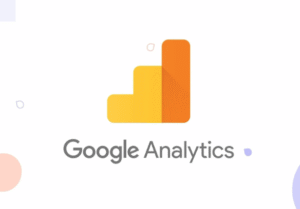Introduction
If you run a site, you probably want answers fast. Who visited, what they clicked, and why they bounced. Then you meet the General Data Protection Regulation and everything suddenly feels complicated. Consent banners appear. Acronyms multiply. Your lawyer sends a calendar invite with a serious subject line. You still need insights, of course. You also need to stay on the right side of the law.
Here is the good news. You can collect meaningful analytics while respecting visitor privacy and meeting regulatory expectations. It takes a clear plan, some technical guardrails, and a small habit of documentation. None of that is rocket science. I promise to keep this friendly, practical, and very specific. You bring coffee, I will bring the checklist.
The quick foundations in plain English
The GDPR is a framework that asks you to do a few core things well. Be lawful and transparent. Collect only what you need. Keep data accurate and secure. Store it for a limited time. Honor user rights when they ask for a copy or want something erased. These ideas sound simple because they are. The details turn simple ideas into repeatable practice.
Analytics data is very often personal data. An IP address can identify a person when combined with other signals. A device identifier can follow a user across visits. Even a page URL can contain emails or order numbers if your team is not careful with query strings. Treat analytics as personal data by default. That mindset will guide your choices toward safer ground.
Cookies are in the same area
The ePrivacy rules sit next to GDPR and focus on storing or accessing information on a device. Cookies fall under this umbrella. So does local storage and many flavors of device fingerprinting. When you use technologies that store or read data on a device for analytics purposes, you will usually need consent. Notice that I said usually. There are some narrow exemptions in some countries for basic audience measurement, but they are strict and limited.
Transparency is not a banner alone. It is a promise to explain what you collect and why you collect it. It is also a promise to let people say no without friction. Your privacy notice should speak like a human. Tell visitors what you track, how long you keep it, and who receives it. Provide a way to contact you and an easy path to withdraw consent. I know that sounded like a lot, yet it is mostly copywriting with a list of links.
Do you need consent for analytics
For most websites the answer is yes. If your analytics relies on cookies, local storage, or code that reads device information, consent is the safe and common route. Consent must be freely given, specific, informed, and unambiguous. That means no pre selected boxes, no dark patterns, and no tracking before a person clicks accept. They should also be able to reject with one click. They should be able to change their mind later without hunting through settings like a treasure map.
There are limited scenarios where consent may not be required. Some national authorities allow an exemption for strictly necessary audience measurement. The rules are strict. The data must be purely statistical. The scope must be narrow. The vendor features must be limited. If you are unsure, act as if consent is needed and you will sleep better. You can still achieve strong analytics with consent in place. The trick is to design your setup to respect that choice and degrade gracefully.
A step by step compliance plan you can follow this week
Use this as your action plan. Print it if you like checkboxes on paper. Tape it near your monitor. Brag to your team when you finish the last line.
-
Map your analytics data. List events, page views, properties, and any user identifiers. Note where the data travels and where it is stored. Create a record of processing that includes purpose, legal basis, retention, and recipients.
-
Choose your legal basis. For trackers and cookies, consent is the usual basis. Avoid legitimate interest for analytics unless you are certain you meet the local requirements. Document your reasoning either way.
-
Implement a consent management platform. Configure it to block analytics scripts until consent. Log consent decisions with a timestamp, locale, and policy version. Give equal weight to accept and reject. Provide a persistent button or link to change choices.
-
Minimize by design. Stop sending personal emails or names in URLs, events, or properties. Enable IP truncation or masking. Prefer rotating identifiers or session level identifiers. Turn off any cross site tracking you do not truly need.
-
Set retention limits. Pick a retention period that fits your analysis needs, not your curiosity. Many teams choose a window between six and thirteen months. Shorter is better unless the business case is clear and documented.
-
Update your privacy and cookie notices. Explain what you collect, why you collect it, and how long you keep it. List your analytics provider and sub processors in plain language. Link to your consent controls.
-
Sign a data processing agreement with your analytics provider. Confirm their security measures and the locations where data is processed. Keep a tidy list of sub processors and revisit it quarterly.
-
Handle international transfers with care. If data leaves the European Economic Area, use appropriate safeguards. That can include standard contractual clauses or a certified program like the EU United States Data Privacy Framework. Keep a short transfer assessment on file.
-
Build user rights workflows. You need a way to handle access, deletion, and objection requests. Practice the steps before you receive a real request. Write down how to find a user and remove their data from your analytics.
-
Review security controls. Restrict access to analytics only to staff who need it. Enforce strong passwords and multifactor authentication. Encrypt data in transit and at rest. Keep audit logs so you can answer questions later.
If you complete those ten steps, you will be well organized. You will also have a paper trail that proves intent and diligence. That matters if anyone asks later. It also reduces stress because your team will know exactly what to do.
Three practical implementation recipes
Consent based analytics for most sites. This is the default setup for many businesses. Load your banner on the first page. Block the analytics script until consent. Fire page view and event tags only after the visitor accepts. Mask IPs, remove personal data from paths and query strings, and keep retention short. Document the choices and take a screenshot of your tag manager. I like screenshots because they save arguments later.
Cookieless basics with server side aggregation. Some teams prefer analytics that avoids device storage. You can collect basic metrics through server logs, aggregated events, or privacy friendly endpoints. You should still respect signals that indicate no tracking. You should still disclose your processing and provide an opt out switch. The data will be less granular, yet it can be more than enough for content and performance work.
Country specific audience measurement exemptions. In some places, authorities allow basic audience measurement without consent under strict conditions. This is not a free pass. You must restrict purposes, limit features, and give users a simple opt out. If you operate across borders, the safe path is a single consent standard that meets the strictest expectation. It keeps your engineering simple and your lawyers happy.
Seven common mistakes and how to fix them fast
Let us save you a day of debugging and one tense email thread.
-
Firing analytics before consent. Fix by enforcing prior blocking in your tag manager and consent tool.
-
Leaking emails in URLs or events. Fix by stripping sensitive query strings and by validating event payloads.
-
Using one user id forever. Fix by adopting rotating or short lived identifiers and by allowing full deletion on request.
-
Keeping raw IP addresses. Fix by masking or truncating, and avoid storing raw addresses in logs unless strictly needed.
-
Vague privacy notices. Fix by writing clear sections that match what your tags actually do.
-
No opt out after consent. Fix by adding a visible consent link or widget that works on every page.
-
Overlong retention. Fix by setting a sensible retention window and documenting why it is enough.
A quick win is a weekly housekeeping session. Ten minutes is enough to review changes, new tags, and consent logs. I keep a tiny changelog for analytics. It reads like a diary for nerds and prevents confusion later.
Documents and templates you should keep ready
Compliance loves receipts. Create a small folder in your workspace and add five living documents. A record of processing for analytics. A copy of your data processing agreement and a list of sub processors. A retention schedule that names the period and the reason. A user rights playbook with exact steps to retrieve and delete data. A transfer assessment that explains where data goes and how it is protected. None of these require fancy formatting. Bullet points work fine. Version numbers help a lot.
For your privacy and cookie notices, write in simple words. Avoid jargon where you can. If you must use a legal term, define it in a sentence. Visitors appreciate clarity and reward you with trust. Search engines also appreciate clarity and reward you with clicks. That is a rare alignment worth embracing.
How to choose a GDPR friendly analytics vendor
A good vendor makes your job easier. Start with data location. Ask for European hosting or regional data controls if you need them. Confirm that IP masking, event filtering, and retention settings are available. Check whether you can delete user level data on demand. Review sub processors and data transfer mechanisms. Make sure access controls exist for roles, and that logs capture changes.
Look for practical features that support consent. Your analytics should honor consent signals by default. It should not require elaborate workarounds to do the right thing. It should offer cookieless modes when you need simplicity. It should avoid cross site tracking unless you explicitly enable it. It should also provide a clear data processing agreement and security overviews that a human can read. If a vendor makes these items hard to find, consider that a signal.
Mini FAQ to unblock your team
Do we always need a banner for analytics
If you store or access information on a device for analytics, consent is usually required. A banner is the standard way to collect that consent. Some narrow exemptions exist in certain countries for basic audience measurement. If you operate across borders, the consistent and safer approach is consent.
Is IP anonymization alone enough
Not by itself. It is a helpful privacy control, but it does not replace the need for consent when you use cookies or similar technologies. Think of IP masking as part of data minimization. It reduces risk and should be switched on even when you have consent.
How long should we keep analytics data
Keep it for as long as you need it to measure performance, spot trends, or run experiments. Then delete it. Many teams start with six to thirteen months and adjust with a documented reason. Short retention windows reduce risk and clutter.
What is a simple way to avoid personal data leaks
Audit your URLs and events for accidental personal data. Remove emails, names, and order numbers from query strings. Use generated identifiers in application logic rather than human readable values. Add checks in your tag manager to refuse events with banned keys.
Do we need a data protection impact assessment for analytics
Not always. You should perform one if your analytics involves large scale monitoring, profiling, or other activities that may create high risk. When unsure, run a quick screening checklist. Document your result. The act of documenting shows diligence even when the answer is no.
A short script for your consent banner
You can adapt this copy to fit your brand voice. Keep it honest and clear.
We use analytics to understand what content works and to improve your experience. We do not sell your data. You can accept or reject analytics, and you can change your choice at any time. Read our privacy notice to learn more.
Place accept and reject buttons side by side. Add a link to settings for granular choices if you offer them. Make it simple, and your visitors will respect the effort.
Conclusion
GDPR compliant analytics is not a scary maze. It is a series of small decisions made with care, documented with patience, and implemented with predictable tools. Start with the basics. Choose consent when you need it. Trim what you collect. Shorten retention. Explain what you do and why you do it. Build a muscle for deletion on request. Improve your security posture a little each week.
When you adopt that posture, analytics becomes easier to defend and easier to scale. Your team will feel lighter. Your visitors will feel respected. Your lawyers will nod instead of frown. Your product and marketing teams will still get the insights they need to grow the business. That is the balance we all want.
If you prefer an analytics platform that embraces privacy by design, consider PrettyInsights. We are GDPR and privacy compliant, and we focus on giving you the controls that support your obligations. You get clear consent integrations, sensible defaults for minimization, and deletion flows that actually work. You get useful reports without sneaky surprises.
I will leave you with one line of timeless compliance wisdom. The best way to reduce a data breach is still to collect less data in the first place.
And now the joke you earned for reaching the end. My consent banner only has one button and it says coffee.





